People
How I Got My Art Job: Provocative Artist Cary Leibowitz on His Double Life as an Art-Market Rainmaker at Phillips
Cary Leibowitz balances two equally thriving careers in the arts. He also wakes up very early.
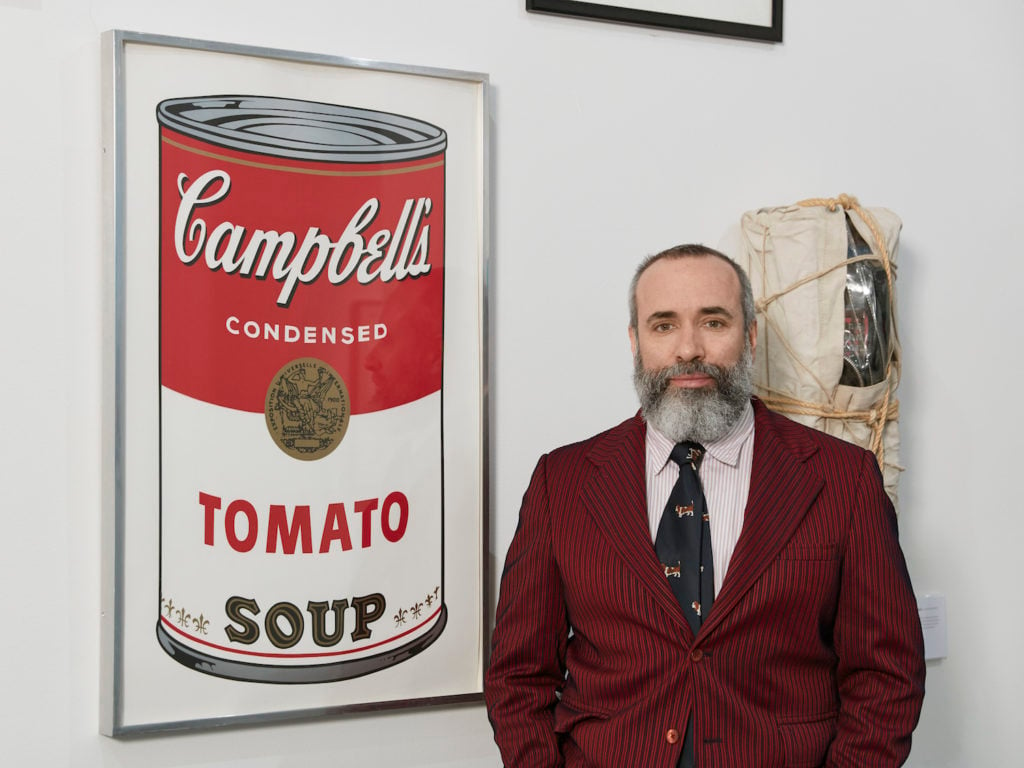
Cary Leibowitz balances two equally thriving careers in the arts. He also wakes up very early.

Sarah Cascone

From fabricators to mummy conservators to private collection managers, the art world is full of fascinating jobs you may not have realized even existed. In artnet News’s column “How I Got My Art Job,” we delve into these enviable art-world occupations, asking insiders to share their career path and advice for others who wish to follow in their footsteps.
This week, we spoke with Cary S. Leibowitz, who in fact has two jobs: He works as an artist (also known as Candy Ass) and is the worldwide co-head of editions at Phillips auction house. The prints department, which he founded with co-head Kelly Troester, will celebrate its 10th anniversary with its April 24 sale.
Education: I have a BFA from the University of Kansas. I started out at Pratt in architecture, which I thought I really wanted, but I quickly realized I didn’t. I had been a New Yorker all my life, and wanted to go someplace I hadn’t been before. The Midwest seemed exotic.
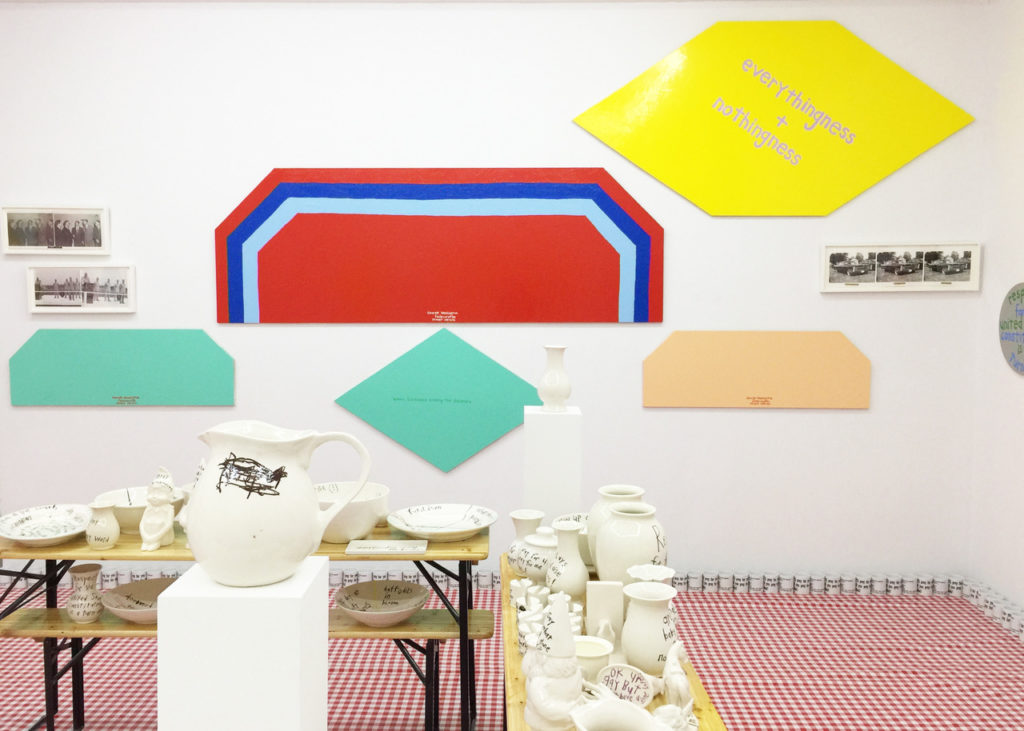
Installation view of “Cary Leibowitz: I Need to Grow Up And Be Taken Seriously Said the Clown at the Urinal,” on view at Invisible-Exports, 89 Eldridge Street, New York, March 29–May 13, 2018. Photo courtesy of Invisible-Exports.
My first job: After I graduated in 1987, I didn’t want to come back to New York, so I moved to Boston. My first job out of school was at a picture frame shop.
How I got into art collecting—and then dealing: I started writing to galleries who were showing works I was interested in, buying what I could afford. It was pre-internet. You wrote a letter on paper and you got slides back. I ended up meeting a lot of different people in the business. That led to some work—it wasn’t so much a sales job as helping pack art, carry art, pick up art…. That snowballed a bit, and in the late 1990s I worked at artnet at its first online auction department. It was a new idea. There was eBay but there weren’t really any fine art auctions online at the time.

Cary Leibowitz at Invisible-Exports at the Independent Art Fair 2018. Photo by Etienne Frossard, courtesy Independent Art Fair.
On abandoning making art full time: Everyone has a moment when they are 30 when it’s like, “Okay, I don’t want to live with three roommates for the rest of my life. I’m going to try and make more money.” I sort of bit the bullet.
When I’d run into people they’d say, “Oh, are you still making art?” It was a little embarrassing. But the more comfortable I got with my day job, I got more confident with my art making. Because I have this respectable, well-paid career, I don’t need my art-making to support me. It gives me the freedom keep making art the way that I want to make it. Now I really try and keep my two careers pretty separate. I don’t really bring up my art-making side with clients here.
How working in the auction world informs my career as an artist: It’s a nice reality check for me. There’s a lot of great art that doesn’t sell well and a few things that really sell well that I think maybe shouldn’t be that successful. But it makes me realize the art market isn’t the only way to judge the value of a piece of art.
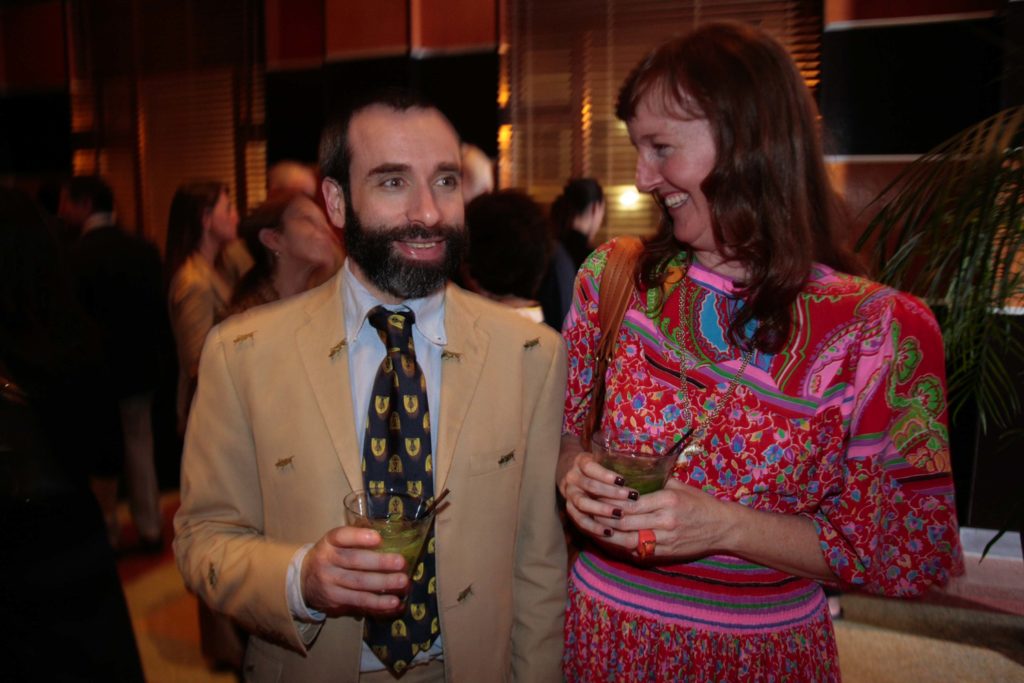
Cary Leibowitz and Kelly Troester at an Art Basel in Miami Beach event in 2006. Photo by Tom Grizzle, ©Patrick McMullan.
How I got the job I have now: When I was at artnet, somebody introduced me to Christie’s, and that’s where I met my co-director Kelly Troester. We were always on the same page. About ten years ago, Simon De Pury, who was running Phillips at the time, proposed to Kelly that she start a print department here. She suggested we do it together, and here we are!
One of my greatest challenges at work: I like to think we curate our sales, but we don’t have the luxury of putting together a sale like we would a museum show—there are a lot of things we might not love, but we’ve got to make it work. A piece will come in and I’ll roll my eyes, and wish we didn’t have to sell it. But sometimes by the time we’re doing the final catalogue layout, I’ll realize it is a nice addition to the overall package.
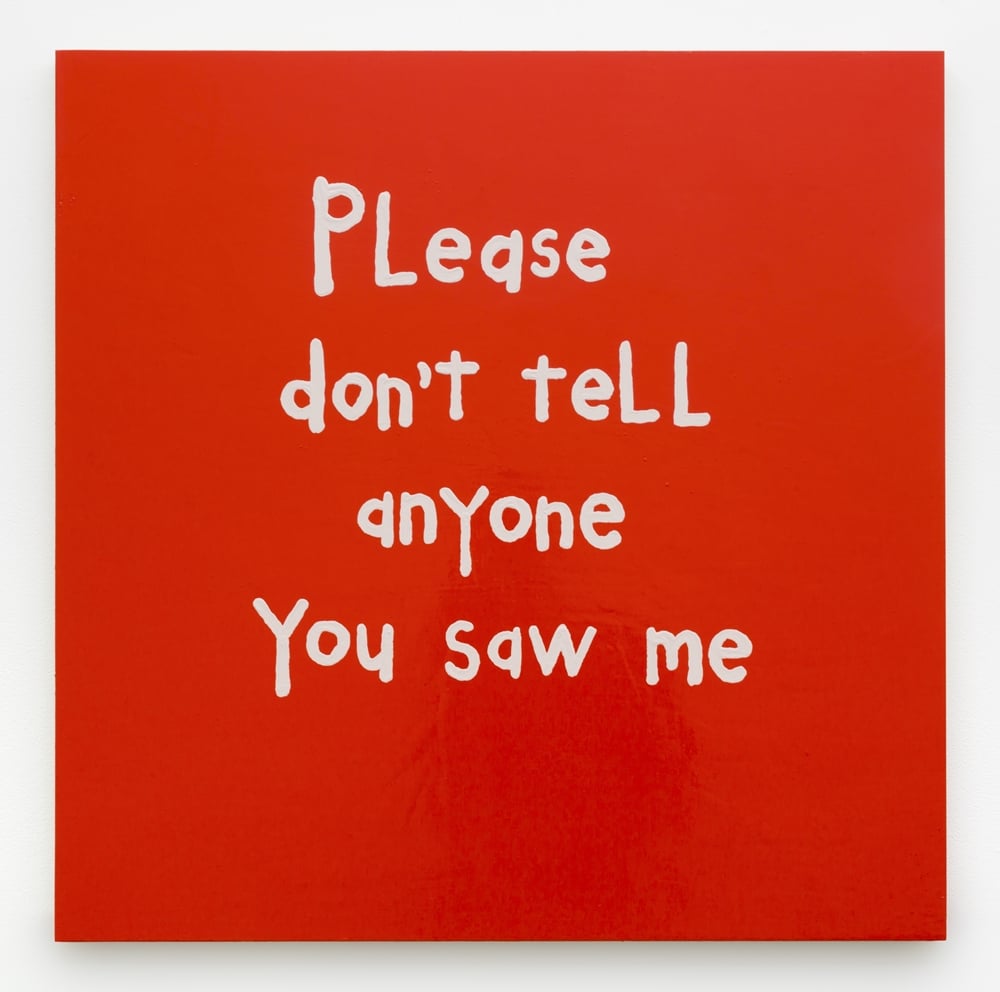
Cary Leibowitz, Please Don’t Tell Anyone You Saw Me (2016). Courtesy of the artist, Fleisher/Ollman, and INVISIBLE-EXPORTS.
Our biggest accomplishment: For us to sell almost $20 million in editions a year is kind of amazing. We always feel like every day is a little bit of a struggle, working piece by piece. When you see the numbers at the end of the year, and we have these 95 percent sell through rates, it’s a wow moment.
A day-to-day challenge: As the director of the department, I’m pricing art for the auction. Half the job is getting the seller to accept the value at which we think the piece should be offered, and the other half is getting buyers who think that is a great price point to jump in and go for it.
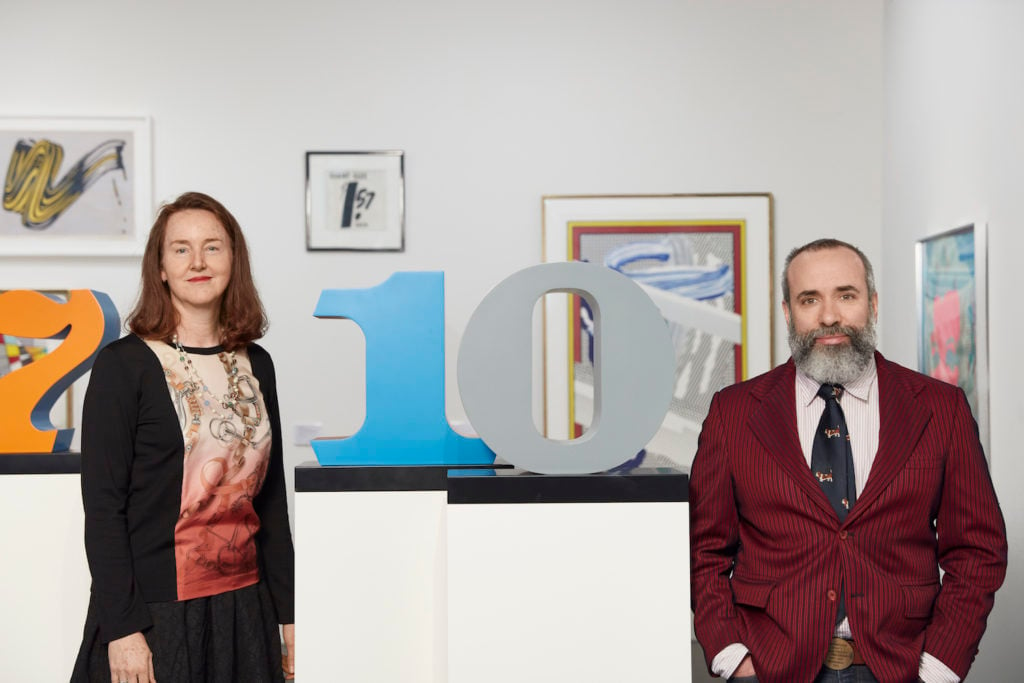
Kelly Troester and Cary Leibowitz, heads of the prints department at Phillips, which they founded ten years ago, with some of the Robert Indiana number sculptures in the upcoming print sale at Phillips. Photo courtesy of Phillips.
What my typical day looks like: Phillips is a typical nine-to-five job that’s really eight-to-seven—sometimes with weekends, because of auction previews. I also have a show up right now at [my gallery] Invisible-Exports, so the last six months I was waking up at four in the morning to work on stuff. At 7:30, I’d start getting ready for work. I come to the office and put the other stuff behind me. In a way, it’s nice to not be able to focus on it all day, but it’s a weird balance. Even for full-time artists, sometimes you feel you don’t have enough time in the studio.

Robert Rauschenberg, Soviet American Array VI (1989–90), estimate $10,000–15,000. Courtesy of Phillips.
On the appeal of prints and editions: Jokingly, I say we are the print ghetto. I first collected them because they were my price point. I make a lot of multiples in my own work: I love the idea of an artist working on a piece that can be owned by 100 people.
What’s been keeping me at work late: This month, we have our biggest sale ever, with 430 works. Our top lot is a seductive set of Robert Indiana number sculptures, from one to zero number. It’s great to have a piece that might be $1 million—that doesn’t happen in editions too often. A rare piece that hasn’t really been at auction before is Robert Watts’s Rembrandt, from Old and New Masters (1973). He has a cult following, but is a little bit of an unsung American Pop artist. The work, which I think is really special, is Rembrandt’s signature in neon.
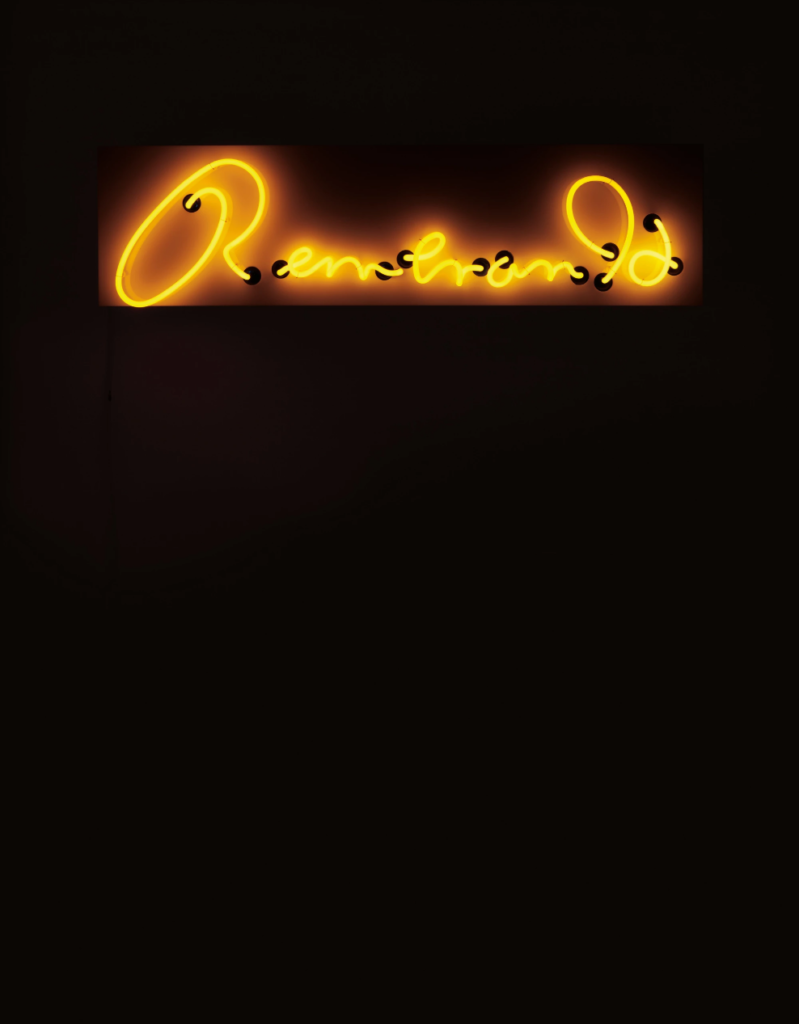
Robert Watts, Rembrandt, from Old and New Masters (1973), high estimate $7,000. Courtesy of Phillips.
My most influential mentor: I worked with Ed Dolman [the CEO of Phillips] at Christie’s and now again here. He’s always been incredibly supportive. Prints are not high on the food chain in the art world, but here we are given equal billing.
Advice for those who want my job: Jump in. Start applying for jobs. You might have to start at a lower level than you would like, but if you have a small ego and a good energy, you can shine. Auction houses aren’t as big as you think, and good colleagues are noticed. It’s pretty fast-moving.
One thing I wish I could tell my 22-year-old self: In some ways, I feel like I’m still telling that 22-year-old stuff every day—I think I’m in denial that I’m not 22! Patience, self respect, confidence, and not using misery as a crutch. These are things I still work at every day.
“Cary Leibowitz: I Need to Grow Up And Be Taken Seriously Said the Clown at the Urinal” is on view at Invisible-Exports, 89 Eldridge Street, New York, March 29–May 13, 2018.